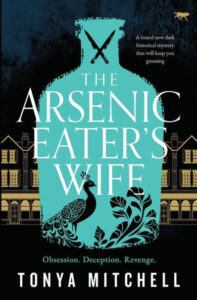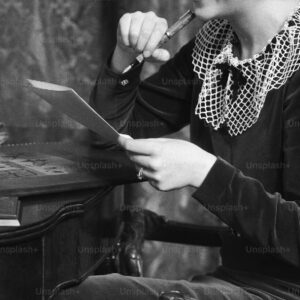Gothic novels, those strange, melancholy reads that drip with atmosphere, have been around for over 250 years. Ever since Horace Walpole’s gloomy Castle of Otranto, readers have reveled in morbid delight when turning the pages of these books. Safe and tucked away under the eaves reading our hearts out—far from the gloomy moors, haunted castles, and asylums that often figure large in these stories—we dare to be transported to mysterious places, the unexplained, the hidden, the lost, and yes, the supernatural. Why? Because we know Things That Go Bump in the Night are imaginary.
Or are they?
Perhaps the best thing about these dark stories is that they might have elements of truth. I would argue that the best Gothics teach us something of ourselves. That we, too, have a dark side. In the wildly successful Netflix series Stranger Things, the dark side is called the Upside Down. It’s where the fog is thick, monsters lurk, and nightmares come to life. A creepy alternate dimension that runs parallel to the known world.
Sometimes the stories are more mundane. Less horror and more, well, earthly. Yet even these tales have an inherent murkiness that makes it difficult to separate the truth from the lies, the good from the bad, the real from the imagined.
In my novel The Arsenic Eater’s Wife, inspired by a real 1889 case, a young woman is accused of murdering her husband with arsenic. The protagonist, Constance Sullivan, is surrounded by people in the house who aren’t what they seem. Who can she trust? Who’s telling the truth? Adding to this stifled atmosphere is the house itself—a malevolent mansion with murky cells of rooms and corridors that disappear into darkness. Even its exterior is the color of a corpse gone cold. At one point, mold begins to grow on the ceiling of the servants’ quarters and it’s all Constance can do to not go mad.
At the crux of the story is a woman who may or may not hang for murder, who may or may not be guilty. But the other players have as many secrets as Constance does and that’s where the dysphoria comes in. Who are we when we are alone with ourselves? What evil lurks around us versus what we create on our own?
Here are 10 new Gothic novels that explore that darkness, a mashup of historical and contemporary, young adult and adult, debut and bestselling authors. All with that otherworldly, haunting quality that keeps Gothic readers coming back for more.
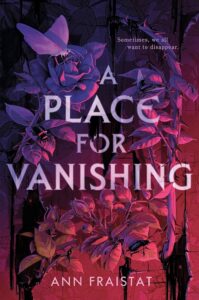
A Place for Vanishing by Ann Fraistat
What happens when a teen and her family move into her mother’s childhood home and the house is menacing to say the least? There are the odd stained-glass windows with depictions of strange insects and roses that bloom unusually blue. And then there are the rumors. Libby’s shocked to learn that macabre seances took place on the grounds a century before. This novel is about masks—Libby’s own and the ones she discovers in the house. Ultimately, she must reveal her true self, faults and all, if she’s to survive the sinister happenings going on around her. A modern, young adult horror with plenty of Gothic elements.
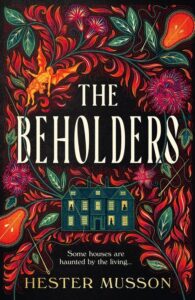
The Beholders by Hester Musson
An ominous house is at the heart of this novel, too. This time, it’s haunted not by the dead who’ve passed, but the living. Young Harriet arrives at Finton Hall as a new maid and soon meets her employers: the reclusive master, a politician; and his wife, the angelic-voiced Clara. Yet, there’s something not quite right about Clara, and Harriet soon begins to feel isolated with only her diary to record her frantic thoughts. What works so well in this late 19th century historical is the building sense of dread. Most sinister of all, Musson entices the reader with an opening glimpse of what’s coming: the body of a young boy being fished from the Thames with a link to Finton Hall.

The Clinic by Cate Quinn
As modern thrillers go, this one has it all: a remote cliffside rehab, a mysterious death, a drug addicted sister desperate to find the truth. Meg checks herself in and can’t quite believe the whispers—that her successful actress sister took her life. But can a pill popping alcoholic find out what happened? Lots of windy twists will keep the pages turning with elements of childhood trauma, lies, and paranoia mixed in to make things all the murkier.
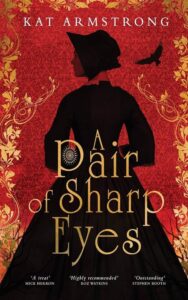
A Pair of Sharp Eyes by Kat Armstrong
Fresh from the country, young Coronation arrives in Bristol looking for work. She finds instead a slave port teaming with filth, poverty, and crime. Worst still, several boys have had their throats slit. Corrie, inquisitive and strong willed, endeavors to find out who the culprit is and why. This early 18th-century-set historical novel has heady themes of racial inequality and religious injustice, sprinkled with lighter tones of romance and empathy. A debut with all the hallmarks of a series.
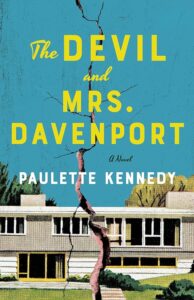
The Devil and Mrs. Davenport by Paulette Kennedy
The first day of autumn brought the fever, and with the fever came the voices. So begins Kennedy’s 1950s tale of a woman who begins to see visions when a local girl is murdered. While a parapsychologist comes to Loretta’s aid, her husband, Pete—a professor at a Bible college—refuses to believe Loretta’s fever dreams are a gift. He sees it as something far more threatening: the Devil’s work. Elements of the supernatural swim throughout the novel, bringing disquiet to a once-tranquil marriage in a small Missouri town.

The Warm Hands of Ghosts by Katherine Arden
In 1918 Irene Iven, a wounded field nurse, receives word that her brother has died fighting in Flanders. After attending a séance in which she receives an otherworldly message that her brother isn’t dead, she returns to the continent to learn what she can of his disappearance. The horrors of war are as real here as the fantastical elements: haunted trenches and an enigmatic violinist with an elixir which may keep soldiers from the brink of madness.

The Road from Belhaven by Margot Livesey
Lizzie Craig, growing up in her grandparents’ home in 19th century Scotland, has the gift of second sight. But these premonitions are often frightening and fail to warn her of her own rocky future. The arrival of her sister and a tumultuous first love will change Lizzie’s life forever and she must learn to navigate a world fraught with betrayals, mistakes, and treachery if she’s to survive.
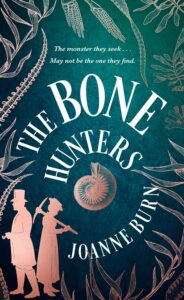
The Bone Hunters by Joanne Burn
When young genius Ada Winters finds a set of unusual fossils buried on a hill in Lyme Regis, it’s the answer to her prayers. The discovery may just save her family from financial ruin and solidify her in the field of geology, a relatively new field in 1824. Enter Dr. Edwin Moyle, a geologist himself who finds Ada appealing but very much in the way of his own success. But just what is it Ada has unearthed, and will it bring her and Edwin fame or ruin?
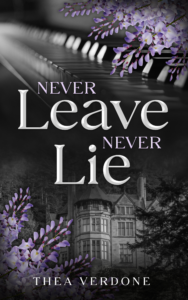
Never Leave, Never Lie by Thea Verdone
Inside a dilapidated Victorian mansion, secrets lurk. Alek is a pianist with a haunted past who composes music with the gift of synesthesia—he can see sounds and hear colors. His partner, Ian, is a gifted contractor who sees possibilities in the grim, crumbling estate they cohabitate. For Alek, the truth about his history is far worse than his lies but disclosing it to Ian could send him packing—and Alek will never let him leave. A dark MM romance about tortured souls.
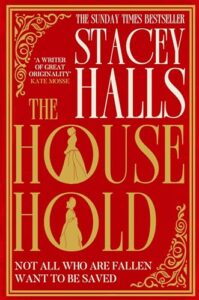
The Household by Stacey Halls
Urania Cottage, a home for unfortunate women (co-founded by Charles Dickens who features as a secondary character), is the center of this murky, mid-19th century historical. Its inhabitants are women who’ve fallen, been incarcerated, maltreated, or orphaned. Meanwhile, in a mansion nearby in Piccadilly, the home’s other founder, Angela Burdett-Coutts learns distressing news: her stalker of ten years has been released from prison. As the two worlds merge in unexpected ways, it’s clear freedom comes at a price.
***


